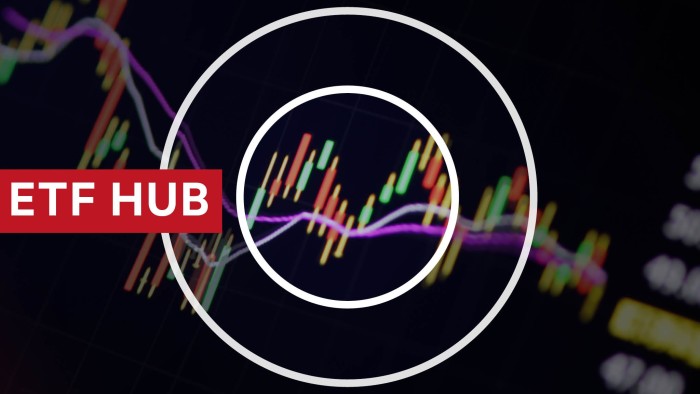Why good news could be bad news for Big Tech

Roula Khalaf, Editor of the FT, selects her favourite stories in this weekly newsletter.
The big numbers associated with Big Tech are enough to unnerve many investors. But perhaps the greatest risk to the sector’s outperformance stems not from its scale alone, but from the prospect of an economic recovery.
The sector has of course provided a major boost to investors lucky or clever enough to have jumped in earlier this year.
Concerns of a swelling bubble were common over the summer, as the world growth-to-value equities ratio, or the ratio of the Nasdaq 100 to the Russell 2000, showed strong similarities to the period preceding the dotcom crash.
Household names from the technology sector make up almost a quarter of the value of the entire S&P 500 index, and about half of the Nasdaq 100. And the big names have done some heavy lifting. Yes, they have pulled back sharply of late, with the Nasdaq 100 index shedding all of its August melt-up. Still, without Big Tech, the S&P 500 would still be down 6 per cent so far this year, not flat.
But should size alone make investors nervous? History suggests not. According to a research paper by Hendrik Bessembinder at Arizona State University, since 1926, the best-performing 4 per cent of listed companies have driven the net gain of the entire US stock market.
Sky-high valuations do make a good deal of sense. These companies’ business models and the gradual digitalisation of our daily lives have contributed to their success. The accumulation of cash on their balance sheets over the years has allowed them to buy back shares; in the second quarter, tech companies accounted for 47 per cent of gross S&P 500 buybacks, and their outstanding earnings margins have supported their strong share price growth. And this comes at a time when the divergence between strong and weak balance sheets has never been more critical.
Covid-19 lockdowns across the globe have accelerated structural trends such as working from home and ecommerce. Ever-lower interest rates on top of $16tn in negative-yielding sovereign and investment-grade debt in the system have made the equity complex a much more attractive asset class, while the lower discount rate has pushed valuations higher.
What is more, investors face a lack of choice when looking for pockets of portfolio protection, and 10-year Treasury yields stuck at 0.5 to 0.7 per cent no longer look attractive for this purpose. This explains how US tech has led the equity market recovery since March 23, a move certainly accelerated by retail flows, momentum playing and FOMO — the fear of missing out.
For as long as markets remain nervous, Big Tech is likely to remain in favour. The chance of a disputed or delayed US election outcome continues to favour growth assets and defensive segments of the global equity market.
So what could bring Big Tech back down to earth? Investors should watch out for the economic outlook and regulation.
Perhaps ironically, the biggest threat may come from a rosier economic picture. In our view, if we get a vaccine that shows signs of being effective, some normalisation of global economic growth would probably push market participants to look for the start of a new mini-cycle. This could lead to a rotation and trigger a diversification out of Big Tech towards the most cyclical parts of the equity complex.
In that scenario, we believe the S&P 400 MidCap index, as well as eurozone and emerging-market equities, would benefit. Old Tech would also probably outperform New Tech.
Inside ETFs

The FT has teamed up with ETF specialist TrackInsight to bring you independent and reliable data alongside our essential news and analysis of everything from market trends and new issues, to risk management and advice on constructing your portfolio. Find out more here
In addition, enhanced regulatory scrutiny and politicians looking to raise taxes would not help. We do not see these as potential triggers for underperformance, but they could mar the strong risk-adjusted returns track record for these Big Tech companies.
The likelihood of more politicians including tech on their agenda in this election year is also increasing, which could lead to greater antitrust scrutiny. Since the 1960s, US regulators have widely attempted to preserve “consumer welfare”, which has meant focusing mainly on prices. But a 2017 study by Lina Khan in the Yale Law Journal entitled “Amazon’s Antitrust Paradox” led to a shift in thinking, with greater emphasis on data privacy, the welfare of workers and the impact of the online retailing giant on its competitors.
Meanwhile, major economies, through the OECD, are working on proposals that could change the international taxation landscape. In January 2019, 129 countries, including the US, agreed in principle to a digital tax under the aegis of the OECD/G20 base erosion and profit shifting (BEPS) initiative. Under this proposal, the digital taxation problem is expected to be addressed by the end of this year.
This all means that while fears of the Big Tech rally collapsing under its own weight are likely to be misplaced, the sector still has vulnerabilities. Those investors optimistic on the prospect of a coronavirus breakthrough might want to look elsewhere.
The writer is a cross-asset strategist at Société Générale CIB
Comments